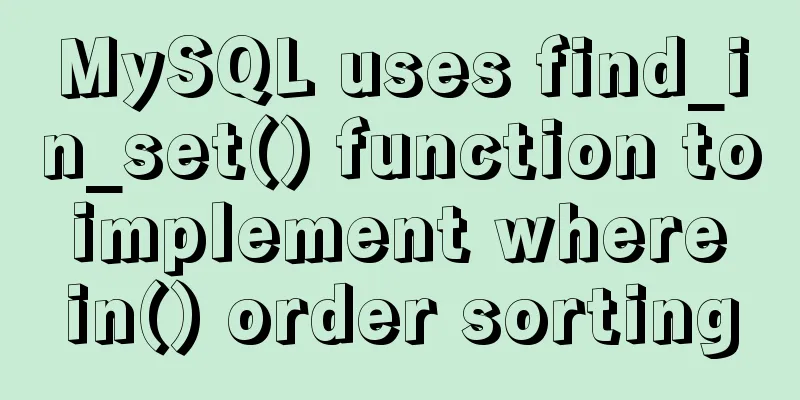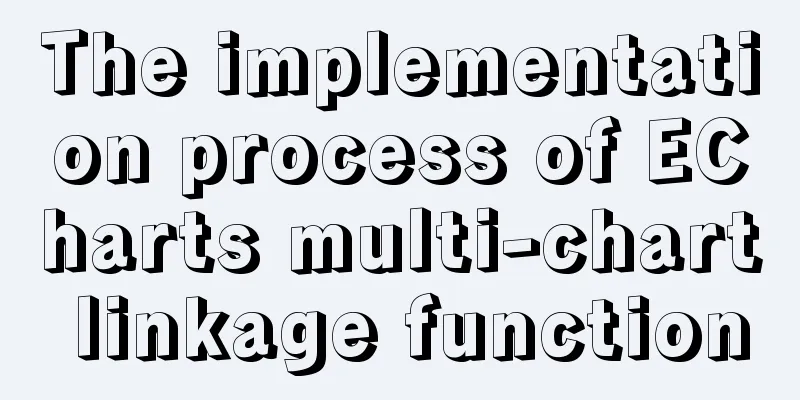Instructions for using JSON operation functions in Mysql5.7

|
Preface JSON is a lightweight data exchange format that uses a language-independent text format, similar to XML, but simpler than XML, easier to read and write. It is easier for machines to parse and generate, and reduces network bandwidth transmission. The format of JSON is very simple: name/key-value. In previous MySQL versions, to implement such storage, either VARCHAR or TEXT large text was used. After the release of MySQL 5.7, the JSON data type and the retrieval and other function parsing of this type were specially designed. Let’s put it into practice. Create a table with a JSON field For example, an 'article' table has fields including id, title, tags An article can have multiple tags, and tags can be set to JSON type The table creation statement is as follows: CREATE TABLE article` ( id` mediumint(8) unsigned NOT NULL AUTO_INCREMENT, title` varchar (200) NOT NULL, tags` json DEFAULT NULL , PRIMARY KEY (`id`) )ENGINE=InnoDB; Inserting Data To insert a data with JSON content, execute the insert statement: INSERT INTO article` (`title`, `tags`) VALUES ( 'Experience Mysql JSON', '["Mysql", "Database"]' ); What is inserted here is a JOSN array ["Mysql", "Database"] Query all the contents in the article table and you can see the newly inserted data. Query Using JSON functions to do two simple queries 1. Find all articles with the tag "MySQL" SELECT * FROM article` WHERE JSON_CONTAINS(tags, '["Mysql"]' ); 2. Find articles with tags starting with "Data" SELECT * FROM article` WHERE JSON_SEARCH(tags, 'one' , 'Data%' ) IS NOT NULL ; The meaning of the three parameters in the JSON_SEARCH function: 1. Documents to be found 2. There are two options for the search range: 'one' to find the first one that meets the conditions, and 'all' to find all that meet the conditions. 3. Search conditions JSON Path JSON Path is used to locate the target field in the document, for example
SELECT JSON_EXTRACT(
'{"id": 1, "name": "mysql"}' ,
'$.name'
);
The result is:mysql JSON_EXTRACT() is a JSON extraction function. $.name is a JSON path, which means the name field of the located document. JSON path starts with $. Let's look at some more examples.
{
"num" : 123,
"arr" : [1, 2],
"obj" : {
"a" : 3,
"b" : 4
}
}
$.num //Result: 123
$.arr //Result: [1, 2]
$.arr[1] //Result: 1
$.obj.a //Result: 3
$**.b //Result: 4
Query example using JSON path SELECT tags-> "$[0]" as 'tag' FROM article`; Update data For example, if you want to add a "dev" tag to an article, the update condition is that it already contains the "MySQL" tag and there is no data with the "dev" tag yet. The update statement is as follows: UPDATE article` SET tags = JSON_MERGE(tags, '["dev"]' ) WHERE JSON_SEARCH(tags, 'one' , 'dev' ) IS NULL AND JSON_SEARCH(tags, 'one' , 'Mysql' ) IS NOT NULL ; You can see that the "dev" tag was successfully added For example, if you want to update the "Mysql" tag to "Mysql 5.7.13", the update statement is as follows: We have experienced JSON_MERGE and JSON_SET above. There are many other functions for modifying JSON, such as: Inserting Data Replace data Append data to the end of an array Remove data from the specified location Through the initial operation experience, I feel that the JSON operation of Mysql is relatively smooth. It is really convenient to use the document structure in MySQL in the future. You may also be interested in:
|
<<: Example of automatic import method of vue3.0 common components
>>: Solution to the error when installing Docker on CentOS version
Recommend
MySQL 8.0.17 installation graphic tutorial
This article shares with you the MySQL 8.0.17 ins...
Solve MySQL startup error: ERROR 2003 (HY000): Can't connect to MySQL server on 'localhost' (10061)
This error is often encountered by novices. This ...
HTML elements (tags) and their usage
a : Indicates the starting or destination positio...
Detailed example of sharedWorker in JavaScript to achieve multi-page communication
This is what happened. Today I was playing with G...
Example code for implementing the "plus sign" effect with CSS
To achieve the plus sign effect shown below: To a...
How to use selenium+testng to realize web automation in docker
Preface After a long time of reading various mate...
Detailed explanation of how Nginx solves the problem of cross-domain access to front-end resources
After being tortured by the front-end cross-domai...
What are the attributes of the JSscript tag
What are the attributes of the JS script tag: cha...
Detailed tutorial on installing nacos in docker and configuring the database
Environment Preparation Docker environment MySQL ...
Example of writing mobile H5 to invoke APP (IOS, Android)
iOS 1. URL scheme This solution is basically for ...
How to use Vue-router routing
Table of contents 1. Description 2. Installation ...
Use viewport in meta tag to define screen css
<meta name="viewport" content="w...
Detailed explanation of how to use Docker to deploy Django+MySQL8 development environment
I reinstalled the system some time ago, but I did...
Summary of Linux Logical Volume Management (LVM) usage
Managing disk space is an important daily task fo...
Implementation of mysql8.0.11 data directory migration
The default storage directory of mysql is /var/li...







![Analysis of common basic operations of MySQL database [create, view, modify and delete database]](/upload/images/67cad65d7d314.webp)

